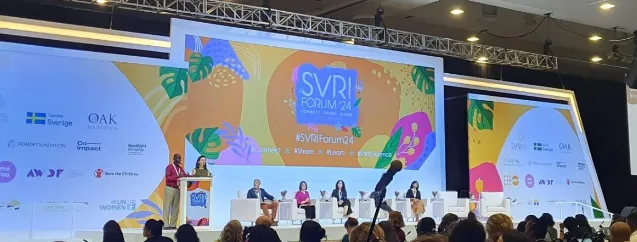Responding to the challenge of operating in high threat environments

High Threat operating environments such as the Ebola outbreak were the catalyst to re-imagine training methods to protect health workers and the local populations they were serving. The unprecedented outbreak drove innovation worldwide to explore advances in digital tech to scale training across a network as opposed to the more training pyramid approach of training trainers, cascading down to frontline workers. See an example from the 2014 Lancet blog, ‘A networked approach to improving the resilience of communities confronted by the threat of Ebola’.
But outside a pandemic scenario, investments in healthcare tend to shift back to more traditional programming such as health systems strengthening. This means that we need to look for applications beyond healthcare to sustain and build the investment case for this approach of Just in Time training. By doing so, the international community will be better prepared to react in a timely manner to the next crisis.

There is a parallel to the immense challenge that the humanitarian world faced at the start of the Ebola outbreak, with the current high threat environment posed by Explosive Hazard contamination. The proliferation of Improvised Explosive Devices (IEDs), Booby Traps and mines in countries such as Iraq and Syria demands more scalable, updatable and efficient approaches to training, monitoring and competency management across the Mine Action Pillars of Risk Education, Clearance and Survey.
If an ebuddi or similar simulation or augmented reality approach does map to multiple sectors, then a stronger case can be made for investing in this approach, as well as sustainability. Why have we chosen to specifically look at Explosive Hazard related training?

The scale of the Mine Action challenge has also become unprecedented as the mass contamination of Explosive Hazards usually effects densely populated areas. This results from Da’esh, and other protagonist’s, adopting a scorched earth policy, leaving behind victim operated IEDs, booby traps and mines in critical infrastructure such as schools, water treatment plants and power stations to specifically target the returning civilian population.
The challenge is illustrated by the city of Ramadi. Ramadi was freed of Da’esh extremists in December 2015 after a battle which left much of the city in ruins. The Iraqi Prime Minister’s office estimate 90 percent of the city is contaminated with bombs and homemade explosives. The US Department of State contracted Janus Global Operations to search and clear critical infrastructure as the key enabler for the reconstruction of the city and set the conditions to provide stability for the returning civilian population as they try and resume a normal life.

However, Explosive Hazard clearance is a costly, labour intensive and dangerous process; the cost of removal is estimated at US$300-US$1000 per Explosive Hazard and United Nations has estimated that clearing the city would cost anywhere between $100-200 million. Given these constraints, and the scale present in other cities across the region such as Mosul, Raqqa and Aleppo there is undoubtedly a critical need for urgent training enhancements, especially in Explosive Hazard related Risk Education as communities may not wait for full clearance before returning and potentially falling victim to the explosive hazards. Another well documented example, from Wired Magazine, is of the evolving threat features the destroyed city of Mosul.
;
A constant updating of critical training material is needed to respond to this enhanced and ever evolving threat. Quality Assurance is vital within any training programme hence robust incorporation of International Mine Action Standards through monitoring and evaluation is required to ensure compliance.
Like the frontline health workers during the Ebola crisis, the training needs to be as accessible, intuitive and impactful as possible across all vulnerable members of the community. Just as important are the opportunities for advanced and automated analytics to measure impact during training and post-delivery.
The Ebola outbreak’s overwhelming caseloads and associated high threat environment for millions provided the focus on the need to re-imagine hi-fidelity training tools in the front line in the health sector. Now the conflict in Iraq and Syria has seen the mass contamination of densely populated areas with Explosive Hazards, creating an equal, or greater, need to reflect on how a hi-fidelity training tool, such as an Ebuddi 2.0, might be adapted to the challenges faced by communities, as well as clearance operators, in countries affected by this type of indiscriminate armed conflict
This blog has been written in collaboration with Mike Kennedy and Dave Luke from Artios Global
Stay updated
Sign up for our newsletter to receive regular updates on resources, news, and insights like this. Don’t miss out on important information that can help you stay informed and engaged.
Related articles



Explore Elrha
Learn more about our mission, the organisations we support, and the resources we provide to drive research and innovation in humanitarian response.